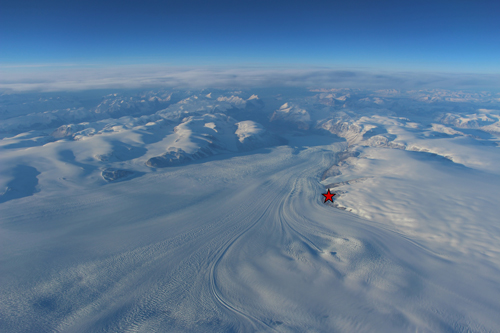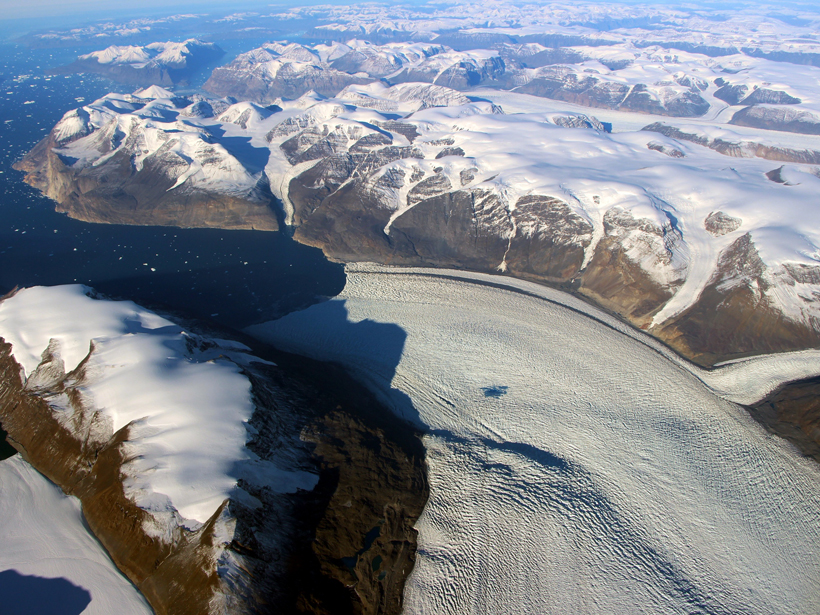Source: Geophysical Research Letters
Greenland’s roughly 1.7 million square kilometer ice sheet has waxed and waned for millennia, with slabs of ice calving into the sea during the summer and snow building the sheet back up in the winter. In recent decades, however, warming temperatures have caused the ice to melt faster than it can refreeze, sending large volumes of freshwater into the ocean. In a new study, Adhikari et al. deduced that the record-setting ice melts of 2010 and 2012 triggered a strange phenomenon: the propagation of an enormous solitary ice wave. This pulse traveled down glacier for many kilometers.
The Earth’s crust is elastic, meaning that it changes shape with the redistribution of mass on its surface, much like the deformation of a foam mattress. When a glacier melts, as 95% of the Rink Glacier basin did in 2012, the bulk of the meltwater mass flows into the ocean, shifting gigatons of ice and water away from the glacier’s interior.
As this water and ice move to the ocean, the net result is a pulse—a seasonal wave—of mass that moves down the drainage system of the ice sheet. During a normal year, this seasonal wave may be small in amplitude, essentially below the level of detection. In contrast, the extreme surface melting of 2010 and 2012 allowed additional water mass to collect at higher elevation and was of unprecedented areal extent. In other words, the respective waves originated well within Greenland, pushing mass out to the ocean.

Glacier waves may be difficult to observe with traditional monitoring techniques such as satellite imagery, so the researchers instead found evidence of the waves in Greenland’s bedrock. Using measurements of horizontal shifts in the bedrock, taken from more than 50 bedrock GPS sensors, they found subtle indications of the broad pulses of mass that shifted from the interior of Greenland to the shore during those two summers.
Through the glacier wave that occurred in the summer 2012, the authors calculate that Rink Glacier lost roughly 6.6 gigatons of ice. The wave itself moved at a speed of about 7 kilometers per month during the summer. A similar but smaller wave occurred in 2010, the data revealed.
The team doesn’t know precisely what internal sequence of mechanical events drove the ice wave, but they suspect that the intense 2010 and 2012 summer melting increased the lubrication at the base of Rink Glacier and softened its shear margins—edges where fast-flowing ice rubs up against slower ice or rock. The weakened ice continued to move at a faster-than-normal rate into the winter months. Such waves are likely to become more frequent as the climate warms and could accelerate rising sea levels. (Geophysical Research Letters, https://doi.org/10.1002/2017GL073478, 2017)
—Emily Underwood, Freelance Writer
Citation:
Underwood, E. (2017), Massive waves of melting Greenland ice warped Earth’s crust, Eos, 98, https://doi.org/10.1029/2017EO076845. Published on 28 June 2017.
Text © 2017. The authors. CC BY-NC-ND 3.0
Except where otherwise noted, images are subject to copyright. Any reuse without express permission from the copyright owner is prohibited.

